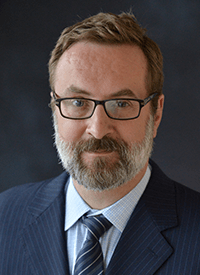Dr. Iwashyna's early contribution provided compelling causal evidence of how sepsis creates enduring disability and cognitive impairment in survivors. Since then, he and his lab have focused on theorizing and empirically assessing the ways in which acute serious illness causes long-term consequences, and identifying potential targets for interventions to prevent, remediate, or ameliorate (via adaptation) those consequences for patients, their families, and their health systems.
In sepsis, for example, Dr. Iwashyna's more recent work has involved: (a) that one-third of inpatient deaths in the US are in sepsis patients, predominantly present on admission; (b) that 1 in 5 apparent survivors of sepsis will die in the following two years, and these late deaths are not explained by sepsis patients’ pre-illness comorbidities, disability, wealth, or social support; (c) developing new, “Big Data” approaches with the CDC and VA to measure sepsis that are more resistant to bias; (d) identifying specific diseases for which sepsis survivors are at disproportionate risk; and (e) integrating these long-term outcomes into large NIH-sponsored and international randomized clinical trials.
A central focus of Dr. Iwashyna's work is the effective training of young clinicians to become clinician scientists. Thus he co-directs the University of Michigan’s National Clinician Scholars Program. He also leads a new NHLBI-funded K12 program, Training to Advance Care Through Implementation Science in Cardiac and Lung Illnesses (TACTICAL). His mentees include physicians, nurses, pharmacists, and disciplinary graduate students. Together they have active programs of social scientific, health services, and clinical epidemiologic research in sepsis, the acute respiratory distress syndrome, cardiac arrest, and persistent critical illness. Together, they use tools including large population data bases; granular physiologic data extracted from electronic health records; directly administered surveys; primary patient recruitment in to clinical trials; direct physiologic measurements; focus groups; and interviews—unified by a focus on rigorous methods and bedside relevance.
